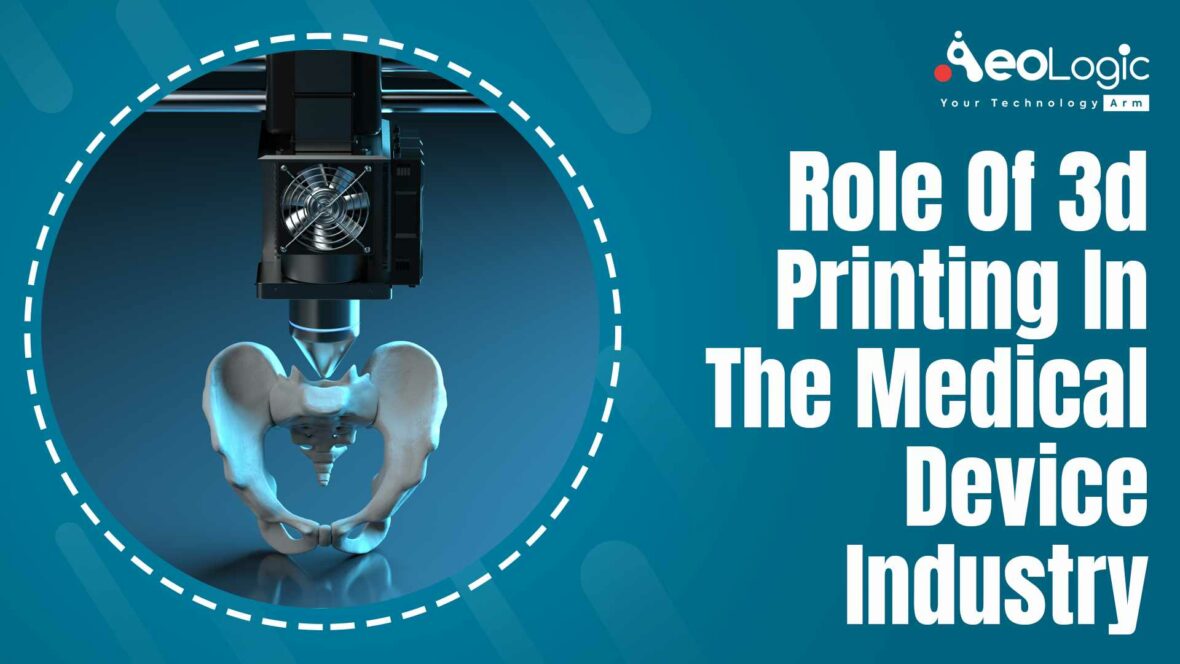3D printing, also known as additive manufacturing, has revolutionized various industries, including the medical device industry. With its ability to produce complex and custom-made products, it has opened up new possibilities for the development of medical devices, such as prosthetics, implants, and surgical tools. In this blog, we will explore the role of 3D printing in the medical device industry and how it is changing the way healthcare is delivered. From cost-effectiveness to improved patient outcomes, 3D printing is providing numerous benefits and transforming the future of healthcare.
Introduction
The Medical Device Industry is one of the most rapidly growing industries in the world. The global market for medical devices is expected to reach $634 billion by 2025. The growth of the industry is driven by the increasing incidence of chronic diseases, the aging population, and the rising demand for minimally invasive procedures.
3D printing is a rapidly evolving technology that is beginning to have a significant impact on the medical device industry. 3D printing offers a number of advantages over traditional manufacturing methods, including the ability to produce complex shapes, the ability to produce customized products, and the ability to produce products on-demand.
Also Read: How 3D Printing, AI and Blockchain Together Can Help Overcome Supply Problems in the COVID-19 Crisis
History of 3D Printing in the Medical Device Industry
The first 3D printed medical device was created in the early 1980s. It was a replica of a human jawbone, created using a technology called stereolithography. This technology was later used to create implants and prosthetics. In the early 2000s, 3D printing technology was used to create custom-made implants for patients. In 2006, the first 3D printed prosthetic was created. This was followed by the first 3D printed implant in 2007. Today, 3D printing is used to create a wide range of medical devices, from implants to prosthetics to drug delivery devices.
- The medical device industry is one of the fastest-growing sectors of the 3D printing market. In 2017, the global market for 3D printed medical devices was worth an estimated $1.9 billion. This is expected to grow to $6.28 billion by 2025.
Future Applications of 3D Printing in the Medical Device Industry
The potential applications of 3D printing in the medical device industry are vast and continue to grow as the technology develops. Here are four potential future applications of 3D printing in the medical device industry:
Customized Surgical Instruments
With 3D printing, surgical instruments can be customized to the specific anatomy of each patient. This could potentially lead to shorter surgery times and fewer complications.
Personalized prosthetics and implants
Prosthetics and implants that are 3D printed can be customized to fit each individual patient perfectly. This could improve the comfort and function of the prosthetic or implant and lead to better outcomes.
Customized drug doses
With 3D printing, drug doses can be customized to each patient’s specific needs. This could lead to more effective treatments with fewer side effects.
3D printed organs
While this is still in the early stages of development, it is possible that one day 3D printing could be used to print organs for transplant. This would be life-changing for patients who are waiting for a transplant and would potentially eliminate the need for organ donors.
Benefits of 3D Printing in the Medical Device Industry
3D printing has become an increasingly popular manufacturing method in recent years, with a wide range of applications in the medical device industry. Here are five benefits of using 3D printing for medical devices:
Improved design flexibility – 3D printing allows for more complex shapes and designs than traditional manufacturing methods. This can be particularly helpful for creating customised implants or prosthetics.
Faster prototyping – 3D printing can be used to create prototypes quickly and efficiently. This can help to speed up the development process for new medical devices.
Reduced production costs – 3D printing can be a more cost-effective option than traditional manufacturing methods, particularly for small batch sizes.
Greater accuracy – 3D printing can create highly accurate and consistent parts, which is important for ensuring the safety and efficacy of medical devices.
Increased patient involvement – 3D printing can be used to create patient-specific implants and prosthetics. This can lead to improved outcomes and a better patient experience.
Also Read: The Future Scope of 3d Printing Technology
Challenges of 3D Printing in the Medical Device Industry
There are also a number of challenges that need to be addressed before the technology can be widely adopted in the medical device industry. These challenges include:
Cost: 3D printing technology is still relatively expensive, and the cost of 3D-printed medical devices is often several times higher than the cost of traditional devices.
Regulatory approval: 3D-printed medical devices are subject to the same regulatory requirements as traditional devices, which can make it difficult to bring new products to market.
Intellectual property: The intellectual property rights surrounding 3D-printed medical devices are still being sorted out, which can make it difficult for companies to protect their investment in new products.
Also Read: Role of 3D Printing in the Manufacturing Industry
Conclusion
3D printing is playing an important role in the medical device industry. It is used for the production of prototypes, small batches, and single items. The technology is also being used to create custom parts. This is important because it helps to reduce the time and cost needed to develop new medical devices. Additionally, 3D printing is being used to create custom implants and prostheses. This is because it allows for the production of parts that are custom made to the individual.
We are here to help you in strategizing, analyzing, and providing you with the best solutions for your requirements. Connect with us to know more!






